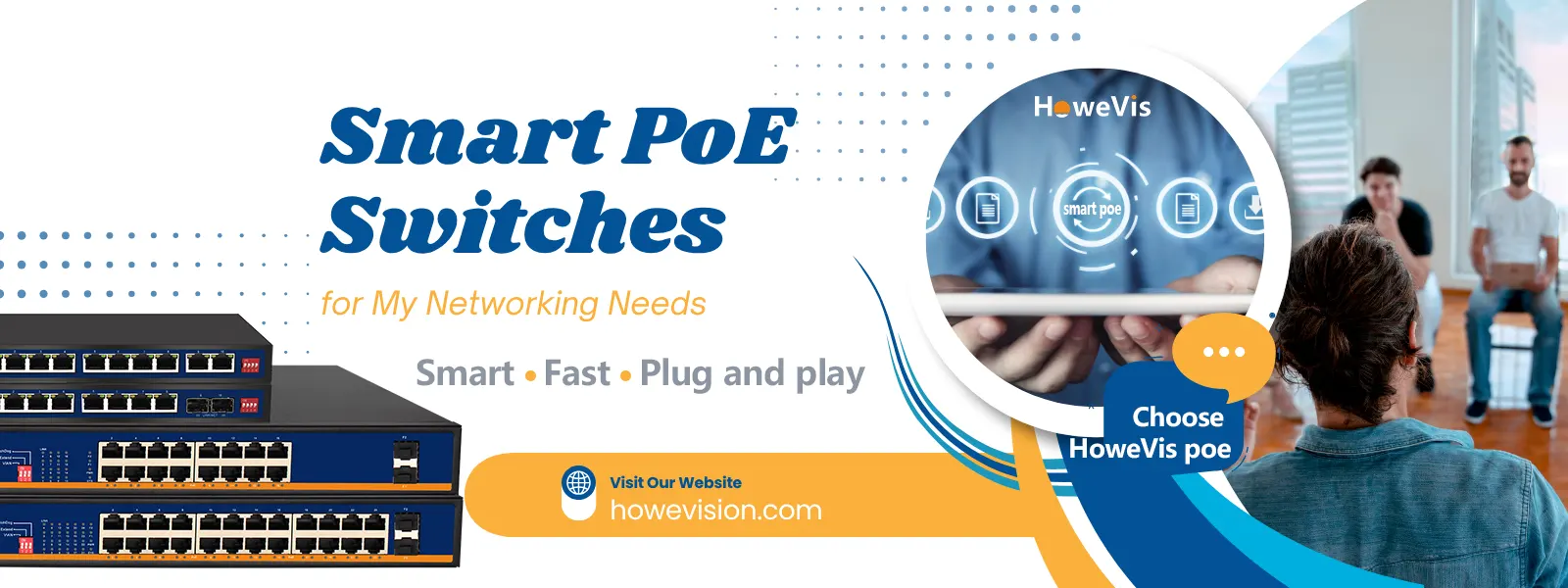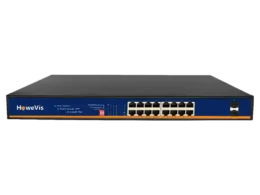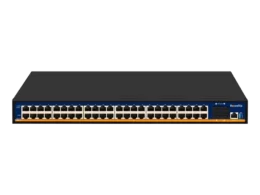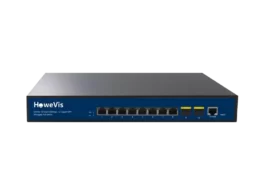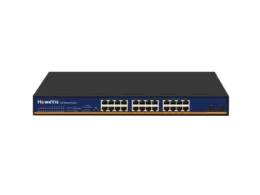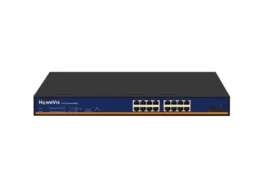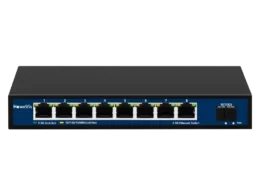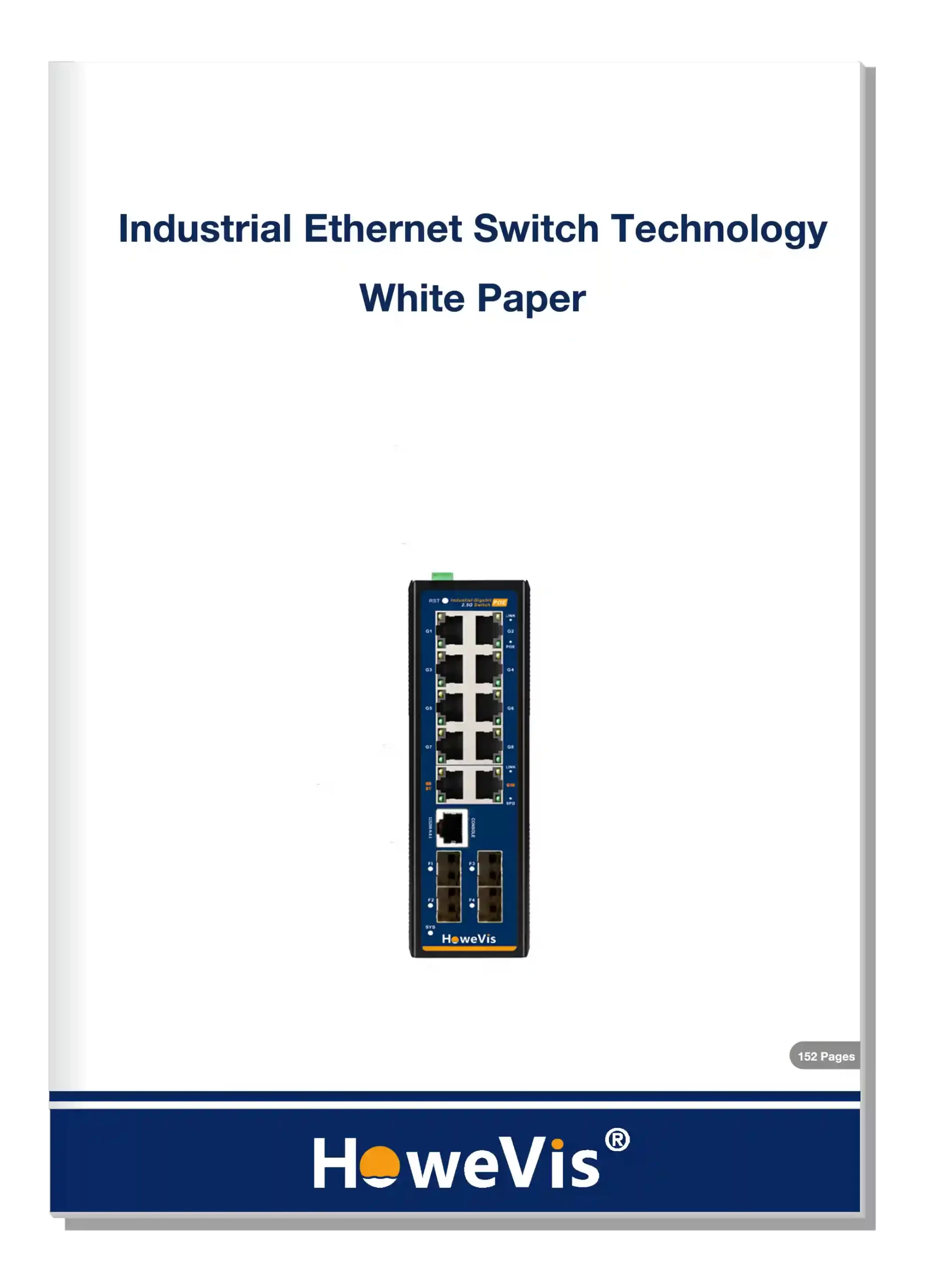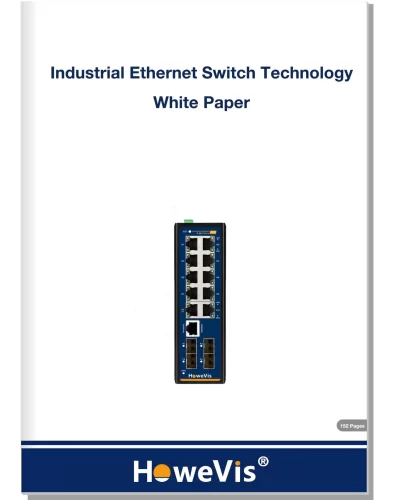A smart PoE switch is a networking device that transmits power and data, across a single Ethernet cable to devices such as IP cameras, VoIP phones, and wireless access points. I utilize these as they assist me in minimizing additional power cables, which makes life easier and more organized. The majority of smart PoE switches can transfer data at rates of up to 10 Gbps, with some providing up to 30 watts of power per port, ideal for an array of contemporary equipment. Not to mention, they allow me control and visibility over it all — from power consumption to network traffic — from one dashboard. Such switches come in very handy in a lot of wiggle rooms – say offices, classrooms or homes requiring a robust yet intuitive network.

Smart Power Delivery
PoE switches power your devices through the network cable – no extra plugs needed! Just plug in your security camera or WiFi router, and it gets both electricity and internet from one cable. No more messy power cords!
These switches are smart about power usage too. They give each device just the right amount of electricity it needs – no waste. Many have handy screens showing power usage, so you always know what’s going on. Works with all standard PoE devices, from simple phones to power-hungry cameras.
Total Network Control
See everything happening on your network at a glance:
Which devices are using the most internet
Real-time traffic flow
Potential problems before they cause issues
Create separate networks (VLANs) to keep work files safe from guest devices. Prioritize important stuff like video calls so they never lag. Troubleshoot without disrupting others by “mirroring” port activity.
Built-in Security
Your network stays locked down with:
Automatic hacker blocking
Device verification (no unauthorized gadgets)
Password-protected controls
Regular security updates
Manage From Anywhere
Check and control your network from your phone or laptop – no need to be onsite. Get instant alerts if something goes wrong. Easy-to-use dashboard lets you fix issues fast.
Easy Troubleshooting
See which devices are online
Check connection status
Spot problems quickly
View connection history to find patterns
See a map of all connected devices
Key Management Features
Smart PoE switches deliver key management features that allow me to maintain my network running smooth and stable. These features allow me to manage energy consumption, monitor utilization and configure notifications to resolve issues before they escalate. Easy setup allows you to manage tasks easily, even for large networks. Automation is key, reducing grunt work and liberating my schedule. Combined, these tools render the network more robust and manageable in any environment.
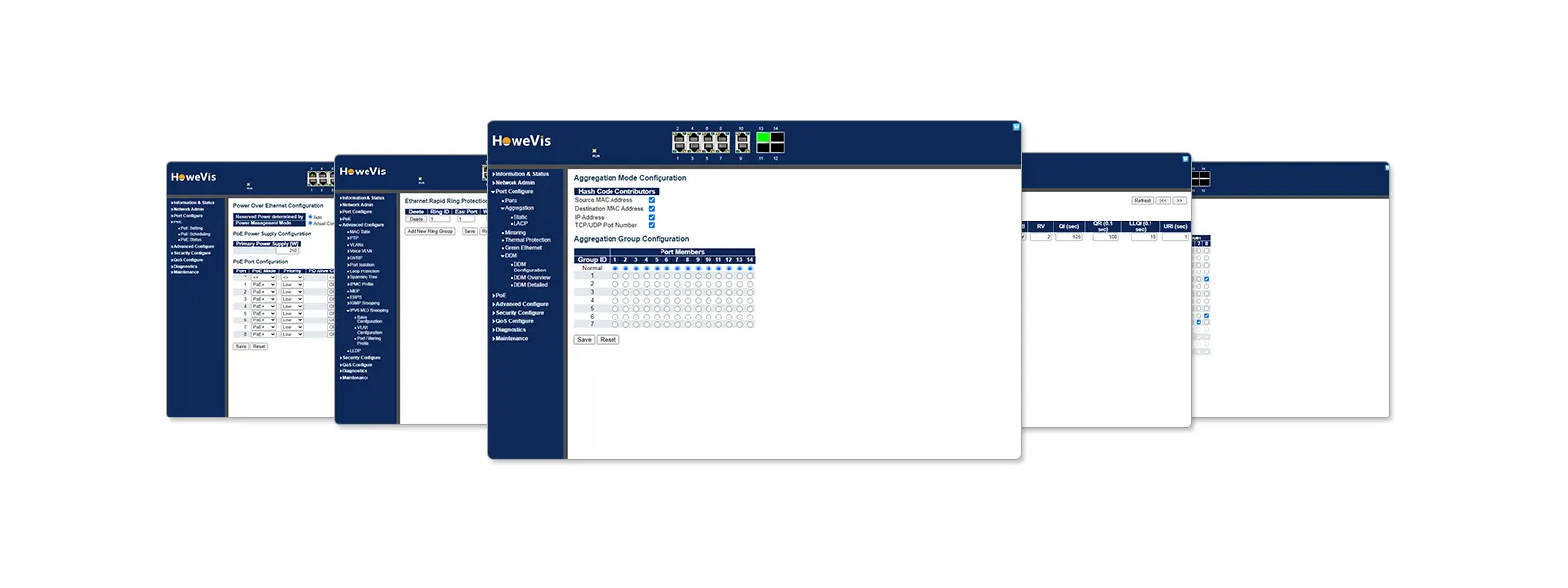
Power Scheduling
- Assists choose occasions for devices to turn on or off, so equipment simply operates when required
- Reduces wear and tear, because less time powered equals longer life for equipment.
- slices energy bills by not running things all day
- Allows me to schedule electricity consumption, keeping the grid stable and secure.
With power scheduling, I can prevent cameras, access points, or other equipment from operating all night or on weekends. That equates to reduced heat and strain on the hardware, which keeps it running longer and saves you money on repairs or swaps. Planning means I utilize just the energy I require — good for the budget and planet!
Device Priority
With device priority I ensure the most critical equipment—such as VoIP phones or security cameras—are never starved for bandwidth. With many users online, this maintains crisp calls and fluid video. When I conduct video meetings or voice calls, I can’t afford to have any lag or drops, so prioritizing these ensures a smooth experience.
When the network is busy, low-priority devices receive less bandwidth. In other words, your primary work tools don’t bottleneck, allowing you all to make progress. I can adjust settings to accommodate new requirements, so the network evolves with the business. This arrangement counts for service and holding users content.
Remote Reboot
Remote reboot allows me to reboot a device without having to walk to the switch or send someone onsite. If a camera or phone freezes, a forced reboot is all it takes to get things going. This saves hours, particularly if the switch supports a remote site or inaccessible location.
I’m able to repair small malfunctions quickly and avoid dispatching a service truck or scaling ladders. That saves me time, and gets me to keep the network up, with less downtime and missed steps.
Usage Monitoring
- Shows which devices use the most power and bandwidth
- Helps spot gear that sits idle or gets overloaded
- Simplifies budgeting for upgrades or changes
- Provides me data to schedule new projects and eliminate waste
With utilization metrics, I know what requires an upgrade and what can be shut down. This aids planning tremendously and in controlling costs. I can set alerts for strange spikes, so I pick up issues quickly.
Real-World Applications
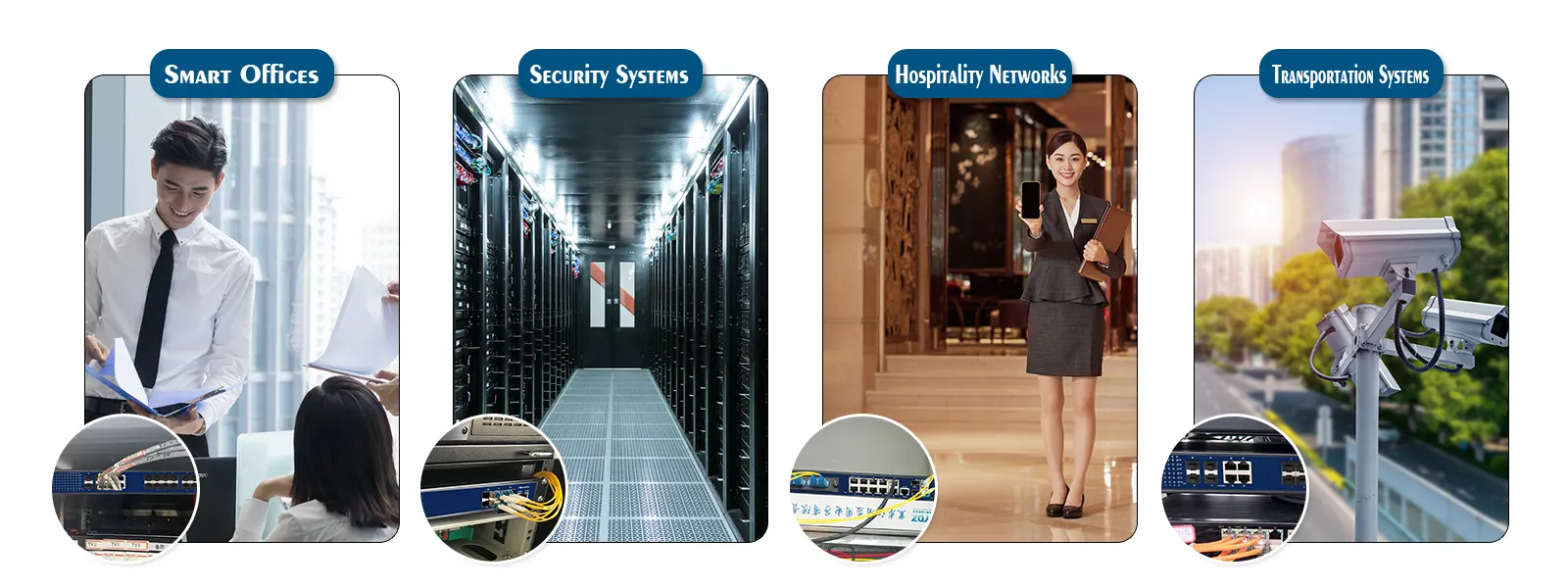
Smart PoE switches are used in many different office settings. They power essential applications in offices, security, retail, and hospitality. The capacity to transmit both power and data through one network cable renders these switches a useful option for numerous organizations. Their primary application is to simplify and reduce the cost and increase the flexibility of network configurations. Though there’s a cap on power and distance, smart PoE switches can still aid the majority of small and medium devices, particularly in IoT, cameras, and Wi-Fi.
Smart Offices
Smart PoE switches really help in keeping offices connected. In my experience, it’s simple to deploy everything from Wi-Fi access points to smart lighting without additional power outlets. It reduces cable clutter, which is important in open plan offices or vintage buildings being re-purposed for the digital age.
They allowed me to hook up quite a few IoT devices, from occupancy sensors to climate control systems. These tools save me productivity and energy! One PoE switch can power and manage them all from a single location, making changes or upgrades far easier. The flexible setup allows me to easily shuffle desks around or reconfigure meeting rooms without massive rewiring projects.
Security Systems
In security, intelligent PoE switches are the backbone for powering and controlling surveillance cameras. I can connect dozens of cameras, motion detectors and even access panels, all from the same switch. This arrangement eliminates the requirement for additional power bricks or splitters lying around the premises.
With a single dashboard, I can monitor every device, identify issues quickly, and deploy software updates. Cisco’s built-in security on these switches helps keep footage and data safe — which is key for privacy and compliance. For security staff, real-time monitoring is simpler because it all operates on a reliable, centralized network, allowing them to act swiftly when required.
Hospitality Networks
Hotels and resorts must provide rock solid wifi in every guestroom and public area. Smart PoE switches allow me to install access points and security devices without having to run new power lines.
PoE makes it easy to deploy smart locks, guest room controls, or hallways with networked cameras. Smart cable selection and planning count—plenum-rated Cat6A allows me to trust the network in crowded or EMI-dense environments. When floor plans shift, or new rooms are added, I can relocate switches or endpoints with minimal hassle.
Smart PoE in Intelligent Transportation Systems
Smart Power over Ethernet (PoE) technology offers a robust and flexible solution for modern intelligent transportation systems (ITS). By delivering both power and data over a single cable, PoE simplifies the deployment of critical infrastructure such as traffic cameras, sensors, and smart lighting without the need for additional electrical wiring.
In high-density or EMI-prone environments—like tunnels, intersections, or transit hubs—plenum-rated Cat6A cables ensure reliable connectivity for real-time monitoring and control. Smart PoE switches enable seamless integration of devices like license plate recognition cameras, emergency call stations, and digital signage, while allowing easy scalability as traffic networks expand. With PoE, system upgrades or relocations become effortless, reducing downtime and maintenance costs while enhancing the efficiency and safety of urban mobility.
Choosing Your Switch
I have to consider my immediate requirements, how my network could expand, the devices I plan to connect, and the features that count for my space. I’ve outlined the major influences on my choice below.
| Factor | What It Means | Why It Matters |
| Port Count | Number of available ports for devices | Decides how many devices connect now and later |
| Power Budget | Total power available for PoE devices | Needs to meet all device needs or risk outages |
| PoE Standard | Type of power delivery (e.g. 802.3af/at/bt) | Impacts device compatibility and power output |
| Uplink Ports | Ports to connect to other switches/networks | Affects performance, expansion, and redundancy |
| Switch Type | Managed, Unmanaged, or Smart/Hybrid | Changes how I control and monitor my network |
| Network Speed | 10/100 or Gigabit (10/100/1000) | Impacts data transfer and device speed |
| Redundancy | Backup in case of switch failure | Prevents network-wide crashes |
| Budget | My available funds for network upgrades | Guides what features I can afford |
-
16 Ports 10/100/1000Base-TX Unmanaged AI PoE Switch with 2xGigabit SFP
-
48 Ports Layer 3 managed POE switch with 4 Ports 10Gbps SFP+
-
8 Ports Gigabit Managed PoE Switch with 2 Ports Gigabit SFP
-
24 Ports 2.5gb Ethernet Switches with 2 Ports 10G
-
16 Ports 2.5gb Ethernet Switches with 2 Ports 10G
-
8 Ports 2.5G Enterprise Ethernet Switch with 10G SFP+
Frequently Asked Questions
What is a smart PoE switch?
A smart poe switch is a network switch that provides me with centralized control of power and data for connected devices. It can configure, perform and trouble-shoot remotely, saving time and resources.
How does a smart PoE switch differ from an unmanaged PoE switch?
A smart poe switch gives me control and monitoring features. I’m able to prioritize, verify device status and power manage. An unmanaged PoE switch simply offers a connection with no configuration.
What management features should I look for in a smart PoE switch?
I seek out features such as VLAN support, scheduling of power, device monitoring and security options. These assist me to fine tune my network and maintain everything operating effectively and securely.
Where can I use a smart PoE switch?
I can deploy a smart poe switch in an office or school or retail store or wherever I need to connect and power cameras or access points or phones over ethernet.
How do I choose the right smart PoE switch for my needs?
I think about how many devices, power needs, management features I require. I look for dependability, name recognition and how well it will mesh with my network.
What is the typical lifecycle of a smart PoE switch?
Generally speaking, the majority of smart PoE switches typically last about five to seven years. I keep firmware updated and watch performance for maximizing value over the switch’s life.
Are smart PoE switches energy efficient?
Yes, smart poe switches enable me to control power to each device. I can remotely disable ports or schedule power, which saves me energy and money.
